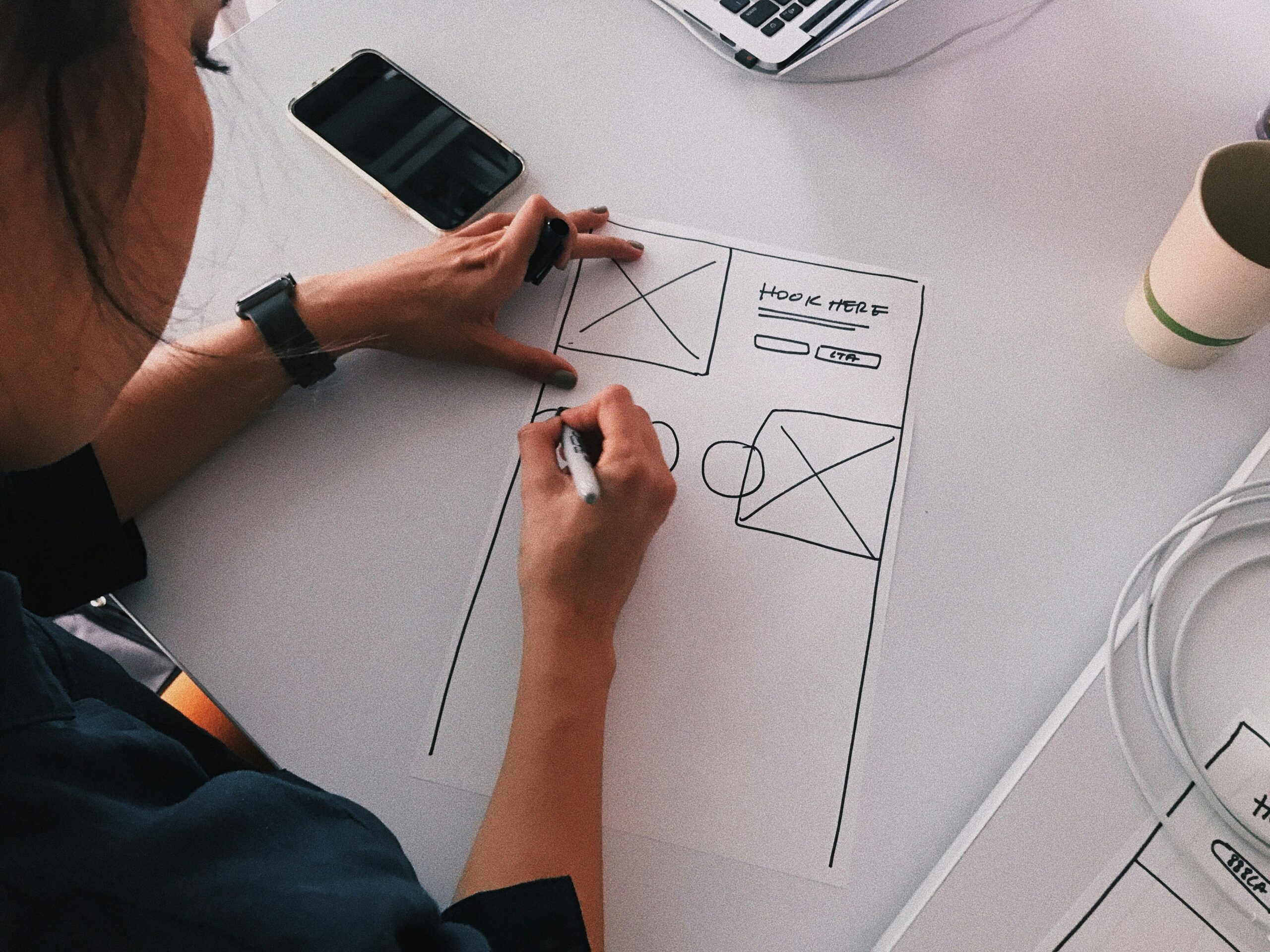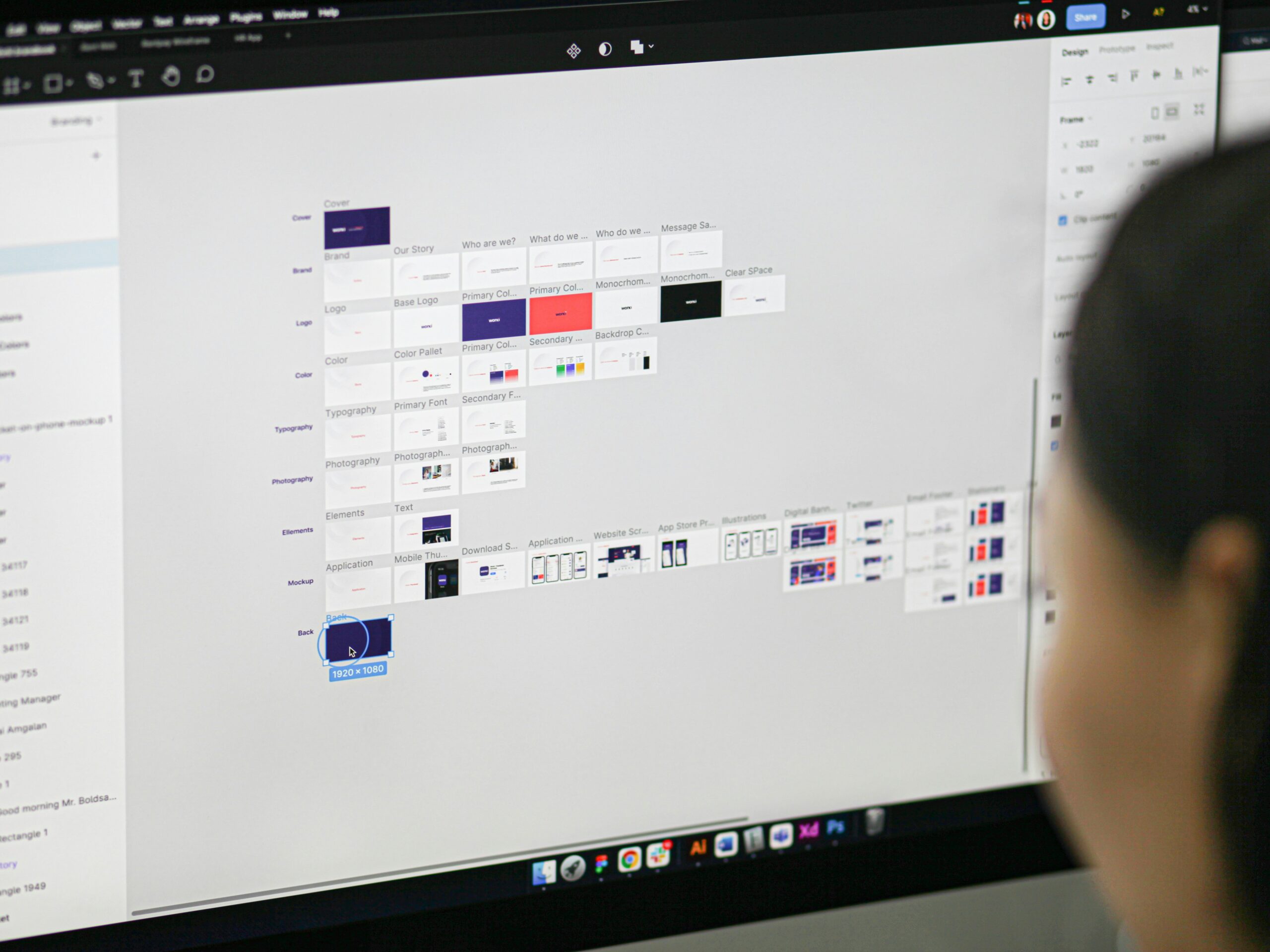When I first heard about UX design I was curious about what made it such a buzzword in the tech world. It seemed like everyone was talking about how important user experience was for apps websites and even everyday products. With so many companies focusing on digital innovation I started to wonder if UX design could be a smart career move.
I’ve noticed more people asking if UX design is a good career choice especially with its creative and problem-solving appeal. The field promises a mix of technology psychology and design which sounds exciting for anyone who wants to make a real impact. If you’re thinking about a career that blends creativity with real-world results you might find UX design worth exploring.
What Is UX Design?

UX design, or user experience design, focuses on optimizing how people interact with digital products, including apps, websites, and tools. I analyze user behavior, map journeys, and prototype solutions to make interactions intuitive and efficient. My process uses research, wireframing, testing, and iteration to balance business goals with real user needs.
I collaborate with developers, product managers, and stakeholders to ensure designs align with technical constraints and business strategies. UX design draws from psychology, information architecture, and visual design to create engaging experiences that support brand loyalty and engagement.
Common Tools Used in UX Design
| Tool Name | Purpose | Example Usage |
|---|---|---|
| Figma | Interface design, prototyping | Interactive wireframes |
| Sketch | UI design, asset creation | Visual mockups |
| Adobe XD | Prototyping, user flows | Clickable prototypes |
| Miro | Collaborative brainstorming, mapping | User journey maps |
| UserTesting | Remote usability testing | Feedback on design concepts |
Key UX Design Tasks
- Conducting user research, such as interviews and surveys, to understand needs.
- Creating personas and scenarios that represent target users.
- Designing wireframes and mockups to visualize layouts.
- Building interactive prototypes for usability testing.
- Analyzing feedback and iterating designs for optimization.
UX design roles remain essential in digital product teams across industries. My responsibilities consistently involve improving how people experience products, using evidence from user research and usability data.
The Growing Demand for UX Designers

Tech companies, digital agencies, and financial services firms prioritize user experience, leading to sustained demand for UX designers. According to the U.S. Bureau of Labor Statistics, web developer and digital designer roles, which include UX designers, are projected to grow 16% from 2022 to 2032—much faster than the 3% average for all occupations. User adoption rates and customer satisfaction scores show direct connections to effective UX in industries like banking, healthcare, e-commerce, and entertainment.
Businesses invest in UX to increase conversions, reduce support costs, and build brand loyalty. Growth of mobile technologies and expanding digital product verticals drive organizations to compete on user experience. Startups and Fortune 500 companies both accelerate hiring to improve interfaces, streamline onboarding, and amplify engagement through better design thinking.
UX Design Job Outlook: Data Table
| Year | US UX Designer Openings | Median Annual Pay (USD) | Projected Growth (%) |
|---|---|---|---|
| 2022 | 118,000 | $78,300 | — |
| 2023 | 128,000 | $80,000 | 16 |
| 2032 | 148,000 (projected) | — | — |
Sources: U.S. Bureau of Labor Statistics, 2024 salary survey (Glassdoor, LinkedIn)
UX designers work across product design, research, and strategy roles in established corporations and fast-growing startups. Example employers include Google, Amazon, JPMorgan Chase, Shopify, and Spotify. Remote work and freelance demand both show upward trends, expanding career possibilities for professionals in the UX field.
Key Skills Required in UX Design

UX design demands a combination of technical, creative, and interpersonal skills. I find that excelling in these areas helps me contribute to user-focused solutions and team success.
Technical Proficiency
Technical proficiency in UX design covers tools, research, and basic coding. I use Figma, Sketch, or Adobe XD to create wireframes and prototypes. I apply usability testing and user research methods, such as surveys or interviews, for actionable data. I understand design systems and, in some cases, have a working knowledge of HTML or CSS to bridge communication with developers.
| Tool/Skill | Usage Examples |
|---|---|
| Figma | Interactive prototypes, wireframes |
| Adobe XD | UI layouts, clickable demos |
| User Research | Surveys, user interviews |
| Usability Testing | A/B tests, in-person testing |
| HTML/CSS Basics | Developer handoff, quick mockups |
Creative and Analytical Thinking
Creative and analytical thinking enable me to solve problems and create engaging interfaces. Creative skills help me generate intuitive layouts and visually appealing designs for platforms like healthcare apps or e-commerce websites. Analytical thinking allows me to interpret data from user tests, uncover patterns, and make evidence-based decisions.
Communication and Collaboration
Communication and collaboration prove vital in UX projects. I explain my decisions using clear, jargon-free language, whether working with developers on interface implementation or presenting to stakeholders in financial services or tech. I use collaborative tools, such as Slack or Miro, to share wireframes, feedback, and updates in real time, ensuring alignment across design, development, and business teams.
| Collaboration Tool | Application Example |
|---|---|
| Slack | Instant feedback, daily check-ins |
| Miro | Shared journey mapping, brainstorming |
| Zoom | Remote usability testing, presentations |
These skills form a foundation for strong performance and growth in UX design roles across various sectors.
Benefits of a Career in UX Design
UX design offers measurable advantages, blending creative work with strong employment prospects and the chance to shape digital experiences. I see clear reasons why many professionals enter this field.
Competitive Salaries
Compensation for UX designers ranks above average in the tech sector. Entry-level and experienced UX professionals often earn salaries that rival or surpass related roles in design or development. In 2023, median pay for US-based UX designers reached $98,000, according to the Bureau of Labor Statistics. Senior designers and leads at tech firms, e-commerce giants, or consultancy agencies report even higher compensation, sometimes exceeding $130,000.
| Experience Level | Median Annual Salary (USD) | Sample Industry (e.g., Tech, Banking) |
|---|---|---|
| Entry-Level UX Designer | $72,000 | Tech startups, fintech |
| Mid-Level UX Designer | $98,000 | Healthcare, enterprise software |
| Senior UX Designer | $130,000 | E-commerce, consulting |
Bonuses, health benefits, and remote work options further enhance the total compensation package for UX designers.
Diverse Work Opportunities
UX designers work in nearly every industry where digital products matter. I see demand from sectors like healthcare, retail, automotive, finance, and entertainment. These roles encompass in-house design teams, digital marketing agencies, freelance consulting, and contract project work. Many UX designers also shift between product design, service design, or specialized research positions.
Remote and hybrid positions are common, giving access to global employers without relocating. Projects might involve designing mobile banking apps, onboarding flows for subscription services, or interactive dashboards for smart devices. Each project brings a new creative and analytical challenge.
| Sector | Sample Projects | % of Employers Hiring (2023) |
|---|---|---|
| E-commerce | Checkout optimization, product filtering | 68% |
| Banking | Mobile apps, secure verification flows | 53% |
| Healthcare | Patient portals, telemedicine experiences | 46% |
| Entertainment | Streaming UI, interactive casino games | 32% |
Positive Impact on Users
UX design directly shapes how users experience digital products and services. By testing, observing, and improving interfaces, I help people complete tasks more efficiently. For example, improved user flows in banking apps reduce customer support calls, while user-centered healthcare portals increase patient engagement. High-quality UX design minimizes frustration, shortens learning curves, and promotes accessibility for all user groups. Each enhancement increases both user satisfaction metrics and brand loyalty, making my work visible and meaningful.
Challenges in the UX Design Profession
Challenges in UX design affect job satisfaction and long-term growth. I face multiple industry-specific obstacles that shape day-to-day work across tech-driven environments.
Fast-Paced Industry Changes
Adapting to technology shifts defines UX design work. I encounter new frameworks, evolving design patterns, and updates to tools at a rapid pace. Consumer behaviors change due to trends in mobile interaction, AI-driven personalization, and voice UI. Example: Apple updates iOS annually, prompting UX teams to redesign features for compliance and consistency.
| Major Change | Frequency | UX Impact |
|---|---|---|
| Software tool updates | Monthly/Yearly | Re-learning workflows |
| Mobile OS updates | Annually | Interface adaptation |
| Accessibility regulations | Occasionally | Redesigning for compliance |
| Design pattern trends | Yearly | Refreshing interaction models |
Continuous learning in UX design ensures optimal product usability, often requiring swift adaptation to tool upgrades and regulatory mandates.
Managing Client Expectations
Aligning stakeholder visions with user needs introduces complexity. I interpret client briefs that sometimes overlook research-driven insights, leading to conflicting priorities. Example: E-commerce clients prioritize visual trends, but user research may reveal a preference for simpler navigation.
I mediate between business goals—like conversion targets—and user-centric design choices. Detailed documentation and regular presentations clarify design rationales for clients, reducing ambiguity and revising cycles. Setting clear timelines, outlining deliverables, and validating decisions with usability testing increase project transparency.
| Client Concern | Typical UX Response | Outcome Example |
|---|---|---|
| Tight deadlines | Prioritize MVP in wireframes | Faster iteration |
| Feature requests | Run A/B testing | Data-driven solutions |
| Visual preferences | Present style guides | Consistent branding |
| Scope changes | Revisit user journeys | Maintain usability |
Is UX Design a Good Career for You?
Choice of UX design as a career depends on alignment with your strengths, interests, and long-term goals. UX design suits people who approach problems analytically, enjoy data-driven decision-making, and appreciate the nuances of digital product interaction. My work often blends design thinking and technical skills in fast-evolving environments, so adaptability and a willingness to learn play a key role in job success.
Skills and Interests That Fit UX Design
- Analytical Mindset: Data interpretation and user journey mapping help identify key pain points.
- Empathy: Understanding real user needs, supported by research, leads to solutions that provide measurable improvements.
- Creativity: Innovative approaches to UI/UX challenges, like designing efficient casino player onboarding flows or gamification features, shape better user engagement.
- Collaboration: Cross-functional teamwork with developers, marketers, and product managers ensures design ideas translate to business impact.
- Communication: Clear presentations of findings influence stakeholders and drive consensus in design choices.
Table: UX Design Career Fit Checklist
| Trait/Interest | UX Role Example | Industry Application (e.g. Casino) |
|---|---|---|
| Analytical thinking | Usability test analysis | Identifying player friction in casino UI |
| Creative problem-solving | Visual design, prototyping | Crafting engaging casino bonus flows |
| Technical curiosity | Wireframing, tool mastery | Optimizing slot game interface layouts |
| Empathy for users | Conducting interviews | Personalizing game recommendations |
| Communication skills | Sharing design rationale | Aligning casino marketing and product |
| Flexibility | Adapting research methods | Responding to new casino trends |
When UX Design Aligns With Your Goals
Career satisfaction in UX design increases for those valuing variety, visible impact, and flexible work arrangements. For example, casino platforms invest in user experience to reduce churn and increase play time, directly connecting the designer’s work to business success. My engagement with diverse product types, including high-traffic casino apps, offers challenges that sharpen my technical and soft skills.
UX design offers remote work, contract, or full-time options, supporting different lifestyles. If prioritizing growth, meaningful work, and dynamic environments, UX design offers a competitive and rewarding path.
Conclusion
Choosing UX design as a career has given me the chance to blend creativity with real-world impact. Every project brings new challenges and opportunities to shape how people interact with technology.
If you’re passionate about solving problems and making digital experiences better for everyone you’ll find UX design both fulfilling and dynamic. The field keeps evolving so there’s always something new to learn and room to grow.
Frequently Asked Questions
What is UX design?
UX design, or user experience design, focuses on improving how users interact with digital products like websites and apps. It involves understanding user needs, designing intuitive interfaces, and ensuring products are easy and enjoyable to use.
Why is UX design important in the tech industry?
UX design is crucial because it enhances user satisfaction, drives adoption rates, and boosts business success. Good UX leads to higher customer retention, increased conversions, and a more positive reputation for digital products in any industry.
What skills are needed to become a UX designer?
A UX designer should have technical skills like using design tools (Figma, Sketch, Adobe XD), basic HTML/CSS knowledge, creative problem-solving abilities, and strong communication and collaboration skills for effective teamwork.
Is UX design a good career choice?
Yes, UX design is a rewarding and in-demand career. It offers competitive salaries, opportunities in various industries, and options for remote or freelance work. It’s a great fit for people who enjoy creativity, technology, and making a real impact.
What are the main responsibilities of a UX designer?
UX designers conduct user research, create personas and wireframes, design prototypes, and test solutions. They also collaborate with developers and stakeholders to ensure products meet both user needs and business goals.
Which industries hire UX designers?
UX designers are hired across many sectors, including tech, finance, healthcare, retail, e-commerce, and entertainment. Both startups and large corporations value strong user experience for their digital products.
What are the common tools used in UX design?
Popular tools in UX design include Figma, Sketch, Adobe XD, Miro, Slack, and Zoom. These help with designing interfaces, prototyping, collaborating with teams, and managing feedback throughout the design process.
How much does a UX designer earn?
In the US, the median annual salary for a UX designer was about $98,000 in 2023. Senior UX designers can earn over $130,000, with additional benefits like bonuses and remote work options.
What are some challenges in the UX design profession?
Challenges include keeping up with rapidly changing technology, managing client expectations, meeting tight deadlines, and balancing business goals with user needs. Successful UX designers adapt quickly and communicate clearly.
Who is a good fit for a UX design career?
People who are analytical, empathetic, creative, and strong communicators typically excel as UX designers. If you enjoy problem-solving and collaborating with others to create better digital experiences, UX design may be right for you.

